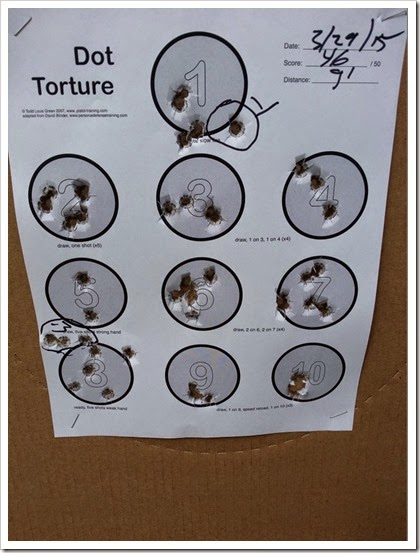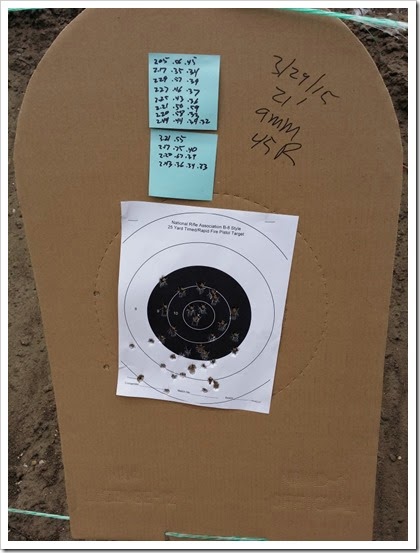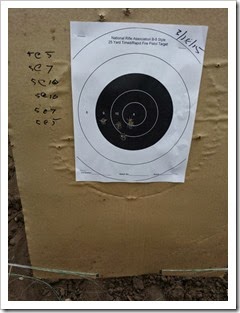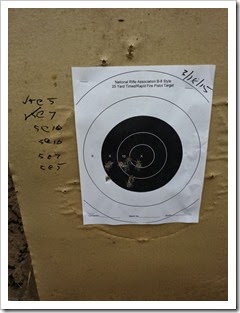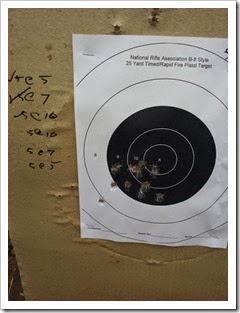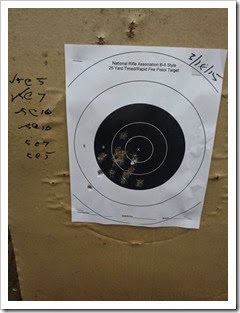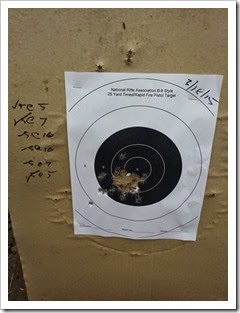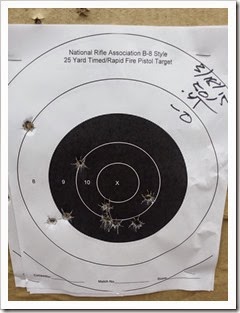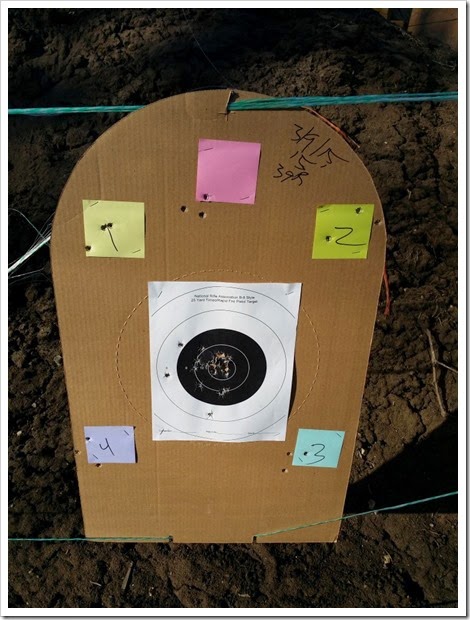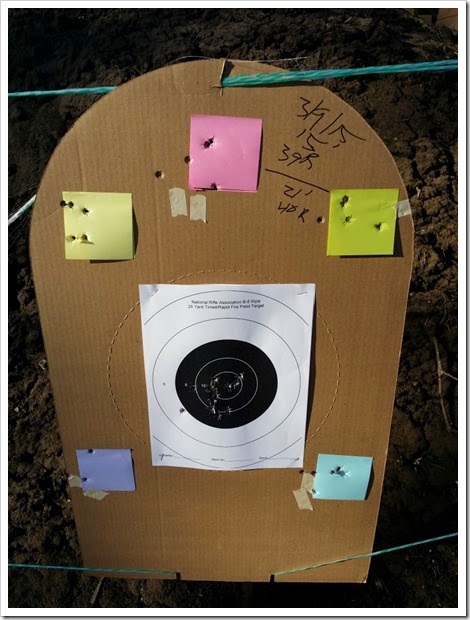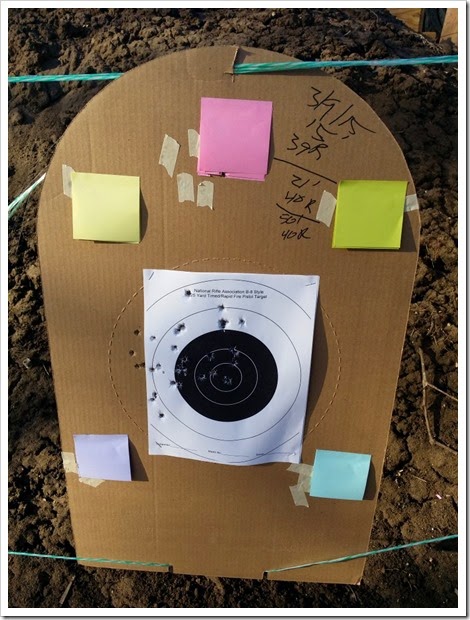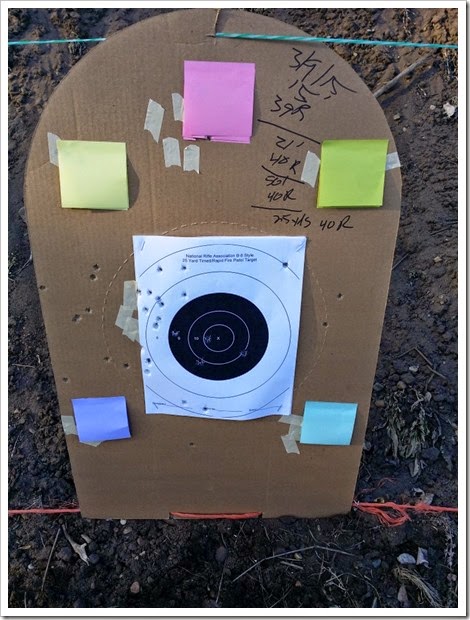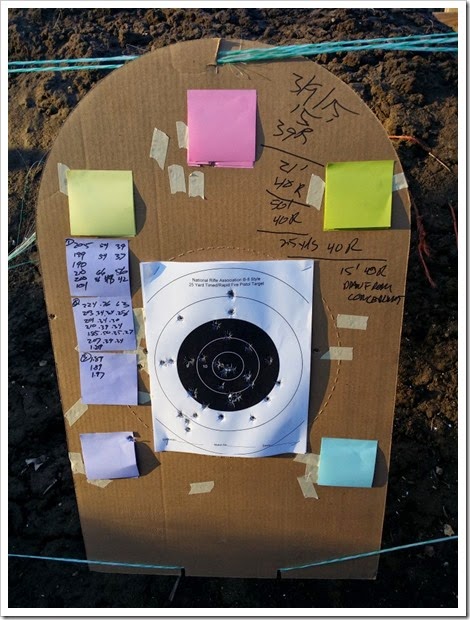Frankly, one of the issues I have with what appears to be the majority of folks that decide to carry a defensive handgun is their resistance to taking on-going coursework. The primary focus seems to be on acquiring the permit to carry (or whatever the heck your particular state decides to call it). Once the permit is in hand . . . the coursework ends.
Notice I use the word “coursework” rather than “training”. This is a personal differentiation I make. Coursework is that endeavor of going to an instructor – be they range instructors or classroom instructors – and hearing/learning/experiencing what they have to say. Depending on their ability to teach you what they intend for you to learn, knowledge is transferred from them to you. In the case of classroom coursework, most times that is “it” – you heard something new, been presented with take home material . . . the end.
With range work the process is similar . . . and different. You are taught specific techniques: presentation from the holster, grip, rapid sight alignment, recoil management, movement . . . to name just a very few topics covered on the range. Add to this that it is typical that instructors have a set of drills that bubble up as their favorites during a range session. These are many times shared through the coursework material. But it ends there . . . when you leave the range. You have not undergone any “training”, you have been exposed to coursework that you can integrate into your “training” the next time you head to the range (something that needs to be at least once a month or more).
Your habitual coursework, your diligent training is what will allow you to transform from a “permit holder” with the right (yes, yes . . . I know, just roll with it) to carry a gun in your state - to a defensive shooter who can actually use your defensive firearm to defend yourself, your family or those in your charge. Coursework, combined with frequent training will save your life. A permit is a false sense of security without the ability to effectively use it.
Ongoing coursework, ongoing training will also stand you in good stead should you ever need to use your defensive handgun which results in the death of another person. I covered part of that in a post entitled Just the Basics - Preparing Your Defense. I’d ask that you take just a few minutes to read that article first – this particular post builds on it.
By taking the steps in “Preparing your Defense” you accomplish a couple of things. You are becoming a more knowledgeable shooter, you are becoming a more effective shooter and you are building a history that shows that you take your responsibilities as an armed citizen seriously. You are building your second round of defense – your history of taking coursework and your range training should you ever need to answer in a court of law for your actions. It’s part of the equation for defending yourself as a defensive shooter. One of the primary components of the process was your ability to “articulate” your specific choices – from your firearm, to why you carry, to the ammunition you use, to the coursework you have taken to the individual training you do every month on the range. And, as a reminder, I threw in one of my favorite phrases . . . “you have all the time in the world NOW” to begin to integrate these things into your life.
That said . . . there’s more. Isn’t there always! Standard disclaimer here – I am not an attorney. I am not a law enforcement officer nor do I have any type of criminal justice degree. What I am is an avid reader and a diligent student. I have read hundreds of articles, countless dozens of books and taken untold hours of classroom coursework growing my knowledge base of things I need to know to defend myself – both with a firearm and before the law. The rest of this post reflects my understanding of the terms. As with all things – do your own research, take your own coursework and make sure you understand the laws and statutes in your community, county, state as well as the federal law.
I want this post to focus on what you are accountable for should you use your defensive firearm to defend yourself, your family or someone in your charge. The result may range from frightening the attacker away at the sight of your determined use of a defensive firearm to you actually taking the attacker’s life. What is expected of you other than uttering the internet’s favorite phrase . . . “I was in fear for my life!” Just what the heck does that mean anyway . . . . because it matters. That is where we are going to spend our time.
Reasonable Man
This phrase bubbles up in conversations pretty quick. This is the “test” of your actions, the minimum benchmark you must be able to meet. Would a “reasonable man”, placed in the exact same set of circumstances, done the same as you have done. In the worst case scenario – would a “reasonable man” made the same choice as you, and taken the attacker’s life? It’s a sobering standard and something you simply must put some thought and study into.
Use of Force
A right to live is a natural right. In the vast majority of our country you have the right to use force to defend yourself, your family or someone in your charge. That said, you must only use the amount of force that is necessary to stop the attack. Once the attack has stopped – your use of force against the attacker must stop as well. Remember, you will be expected to meet the “reasonable man” test . . . was the amount of force you used to stop the attacker be the amount of force a “reasonable man” would use in exactly the same circumstances.
Use of Deadly Force
The use of deadly force is limited to very specific circumstances. You are in imminent danger of death or grave bodily harm. You have no other options, no means of escape. Your only option for survival is the use of deadly force. You must not have initiated the incident that brought about the use of deadly force. You must be able to articulate why you had the belief you were in imminent danger of death or grave bodily harm in such a way that a “reasonable man” would have made the same choice as you.
One of the premier expert witnesses in the United Stated, when it comes to the use of deadly force, is Massad Ayoob. He is often quoted and I will take the opportunity to share one of his quotes on this topic.
The use of lethal force that can end in homicide is justified in the situation of immediate, otherwise unavoidable danger of death or grave bodily harm to the innocent. — Massad Ayoob
“I had to shoot!!!” you say in court. “had too” is justified by your attacker having the Ability to attack you, the Opportunity to attack you, you – as a “reasonable person” had to believe you were in imminent danger of grave bodily harm or death – imminent Jeopardy and that the use of deadly force was your only available safe response – to the Preclusion of all other options available.
Ability, Opportunity, Jeopardy, Preclusion are the foundation of your justification for the use of deadly force. Let’s break these down individually.
Ability
The person attacking you has both the physical and practical ABILITY to inflict “immediate, otherwise unavoidable danger of death or grave bodily harm”.
What a “reasonable man” would conclude, as well as context – comes into play. A person with a gun has the Ability to inflict grave bodily harm or kill you throughout a broad range of distances
A person with a knife, a ball bat, a hatchet, a hammer, a screw driver when used as a weapon against you has the Ability to inflict grave bodily harm or kill you.
You MUST be able to clearly articulate why you believed your attacker had the Ability to inflict “immediate, otherwise unavoidable danger of death or grave bodily harm”.
Opportunity
An attacker may well have the Ability to inflict “death or grave bodily harm”, they must have the Opportunity to do so – right now. They must present an “immediate, otherwise unavoidable danger of death or grave bodily harm”.
While a person with a knife – a football field away has the Ability to inflict grave bodily harm or kill you – he does not have the immediate Opportunity – because he is 100 yards away.
A person with a knife – at a close distance – DOES have the Ability to inflict grave bodily harm or kill you and also has the immediate Opportunity as well because of the short amount of time it takes to cover the distance between you.
An armed intruder separated from you by a safe-room’s door has the Ability to inflict grave bodily harm or kill you, but lack the immediate Opportunity because of the door. A “reasonable man” may not believe you had the right to shoot them through the door.
Should the armed intruder break through the door and into the safe room – they now have the immediate Opportunity to inflict grave bodily harm or kill you.
Again - you MUST be able to clearly articulate why you believed your attacker had the Opportunity to inflict “immediate, otherwise unavoidable danger of death or grave bodily harm”.
Jeopardy
Jeopardy is a very subjective component of the need to use lethal force. Would a “reasonable man”, in your exact situation, come to the same conclusion you did – that you were in immediate Jeopardy of “otherwise unavoidable danger of death or grave bodily harm”. Your situation is NOT Potentially dangerous . . . it is Actually dangerous
We are surrounded daily by people who could potentially harm us. Some carry knives, some carry guns, some drive cars – but without an action meant to do you harm – they remain a Potential threat
The person who draws a gun and shoots at us, pulls a knife and attacks us, raises a bat to strike us while screaming threats aimed at us . . . They have become an Actual threat and have put us in immediate Jeopardy
Should your attacker break off the attack and leave – you are NO LONGER in immediate Jeopardy – and would no longer be justified in the use of deadly force against them as they leave
Again - you MUST be able to clearly articulate why you believed you were in immediate Jeopardy of “immediate, otherwise unavoidable danger of death or grave bodily harm”.
Preclusion
Preclusion looks at the attack on you and your response through a “wide-angle lens”. We are expected to use only the amount of force necessary that a “reasonable man” would determine was necessary to stop the attack, and protect ourselves or protect our family.
This “wide-angle” lens of the “reasonable man” would Preclude all other options – and determine that our only possible response to defend our self was our “tool of last resort” – the use of deadly force.
There were no other safe options – you could not run away, you could not use a non-lethal weapon without placing yourself in “immediate, otherwise unavoidable danger of death or grave bodily harm “.
You MUST be able to clearly articulate why you believed you had no other choice but to use deadly force to protect yourself from “immediate, otherwise unavoidable danger of death or grave bodily harm”.
Disparity of Force
Disparity of force – the attacker has a significant size advantage. A 230 pound male attacks a 120 pound female with intent to do her grave physical harm. This is a “Disparity of Force” and plays into the decision to use Deadly Force. Would a “Reasonable Man” decide that the use of Deadly Force was justified by the woman to defend herself.
A home owner is confronted by multiple individuals entering their home – some are armed. Here too the Disparity of Force comes into play. Would a “Reasonable Man” decide that the homeowner was justified in using Deadly Force to defend against multiple intruders – some of which were armed?
Remember, the laws regarding personal defense and the use of Deadly Force can vary widely from community to community, county to county and state to state. It is your responsibility to know the law in your community and the laws of any other community or state you may travel to.
As I said earlier – you have all the time in the world now, today, this moment to begin to think about these foundational blocks to your defense should you need to use your defensive handgun to defend your life, your family or someone in your charge. You will be expected to articulate each of them clearly should the need arise. Today is when you should begin expanding your knowledge of them . . . right now!
Honestly, of all the coursework I’ve taken on this topic, all the books I’ve read on this topic . . . Massad Ayoob is at the very top of the list of experts you should take coursework from and to place on your reading list. His classroom offering is his MAG-20 course. His latest book is Deadly Force: Understanding Your Right to Self Defense. If it is not on your night stand or in your Kindle . . . it needs to be.
You have a right to life. You have a right to go home to family and friends at the end of the day. You have a right to defend your life. That said . . . it is also your responsibility to know how to defend that right both on the street and before the law.
You have all the time in the world . . . .
